Though the concept of eating insects may be foreign to many brought up in the West, it has been practiced widely across the globe for ages. BBC Travel stated that a village in the Colombian Andes attributed its longevity to eating ants. These people of Barichara regularly collect queen ants with large bellies from anthills to use in their cuisines. But is eating ants worth it? Find out by reading on!
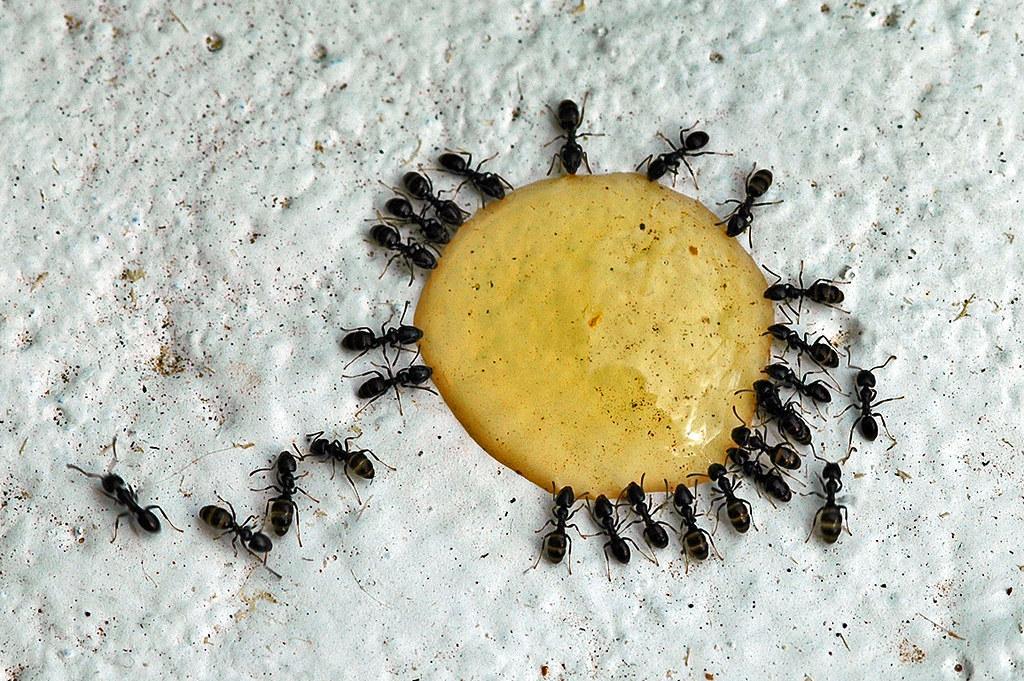
Ants are generally delicious, but how you collect them could be a problem.
According to Dr. Alyssa Crittenden of the University of Nevada, “Insects including ants are actually a fantastic form of nourishment; they are often packed with fat, protein, and loads of vitamins and minerals.”
In fact, several companies have begun using crushed ants to make flour and protein powder, and these products are being sold at very premium prices.
Ants are highly nutritious, and ant food is widely consumed in many Asian and South American countries. Methods of preparation differ by location and ant species. Moreover, ants make a great candidate for survival foods. They can supply your body with essential proteins and fats, which can help your body stay strong to survive.
So, keep reading if eating ants sounds like something you want to try!
Related: 50 Edible Bugs We Dare You To Try (Some Might Surpise You)
First, A Little Guide To Ants!
Unlike other sources of protein for human consumption, such as beef and pork, ants have simple dietary needs. Most of them eat leaves, seeds, tiny insects, nectar, and honeydew. So, ant farming for human consumption is no problem at all!
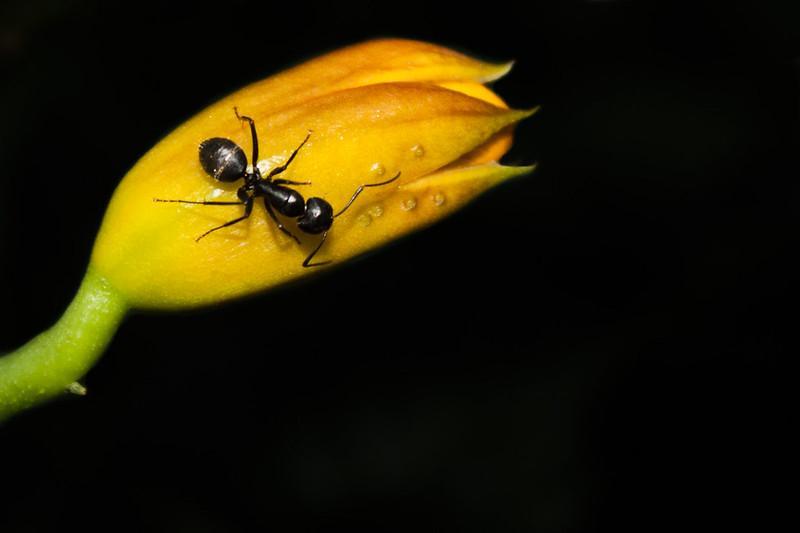
Ants are most closely related to bees and wasps, which some people also eat, by the way!
It is already common knowledge that the practice of humans eating insects and insect products has a long and complicated history.
For instance, there are over 10,000 recognized species of ants in the world, and many of these ant species are consumed on a regular basis as food in many parts of the world. This is especially true for tropical areas, which could contain as much as fifty percent of the world’s total insect population.
Ants resemble termites quite (another edible bug), and the two are frequently confused. Ants, however, have unusually large heads, kneed antennae, and formidable jaws. In addition, unlike termites, ants have a thin “belly” between the abdomen and the thorax.
What other things make ants a potential food source?
Well, while ants are little and unnoticeable, they are abundant. The number of ants in a single ant colony can range anywhere from several hundred to several thousand, but a super colony may have as many as several million.
There are almost 40 tons of bugs for every person on the earth, so it should be no surprise that they will play an essential role in supplying the ever-growing need for food that will be imposed by a human population that shows no sign of slowing down.
Nutritional Value Of Ants
A serving of 100 g of red ants provides around 14 g of protein in addition to 6 mg of iron, which is approximately one-third of the daily requirement of 18 mg for women and 71 percent of the daily requirement of 8 mg for males.
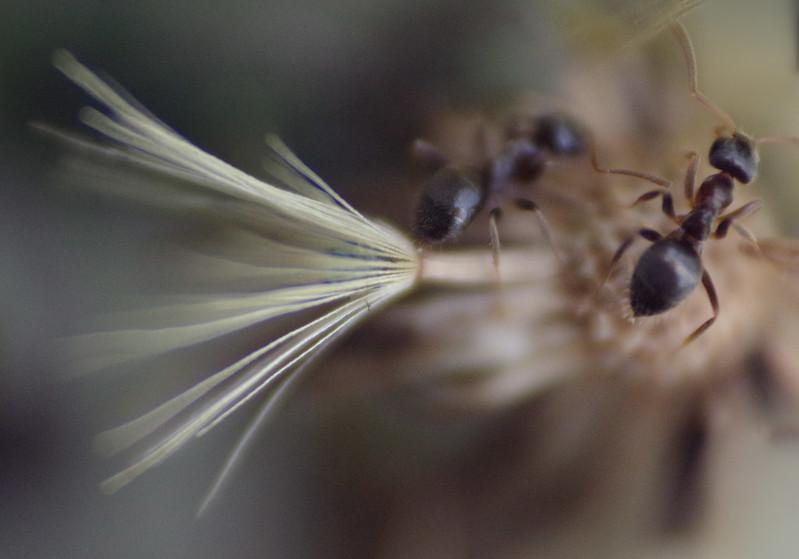
Ants, much like other edible insects, contain a substantial amount of nutritional value.
If you always try to keep the ants off the picnic blanket, maybe it’s time to change your ways. Ants are nutrient-rich, particularly in calcium and potassium, but also in iron, phosphorus, and magnesium. However, the nutritional value of different species of insects, especially ants, can differ significantly from one another.
For instance, adult leaf-cutting ants and black ants have roughly 42-53 grams and 40-45 g of protein per 100 g, respectively. On the other hand, the larvae and eggs of weaver ants contain approximately 7 g of protein for every 100 g of weight.
However, similar to other insects, edible ants are relatively low in fat (4 g of fat per 100 g of product). The Atta laevigata species, often known as the South American leafcutter ant, provides a rich source of unsaturated fatty acids, which help prevent excessive cholesterol.
To put it another way, ants are a better option than beef or pork when it comes to your health. Last but not least, ants are an excellent source of fiber, which is an essential component for maintaining healthy intestines. Ants fiber, however, is mostly chitin. Chitin is a type of dietary fiber your body can’t break down, but it still needs.
Ants Nutritional Value Per 100 g
| Energy | 100 to 120 calories |
| Carbohydrates | 3 to 5 g |
| Fats | 3 to 4 g |
| Protein | 7 to 14 g |
Related: How To Get Rid Of Tiny White Bugs On Eggplants For Good?
What Do Ants Taste Like?
Author of the Eat-A-Bug Cookbook and renowned science journalist David George Gordon compares the flavor of ants to “cracked pepper,” adding that the “exotic flavor” of ants is “nearly impossible to describe.”
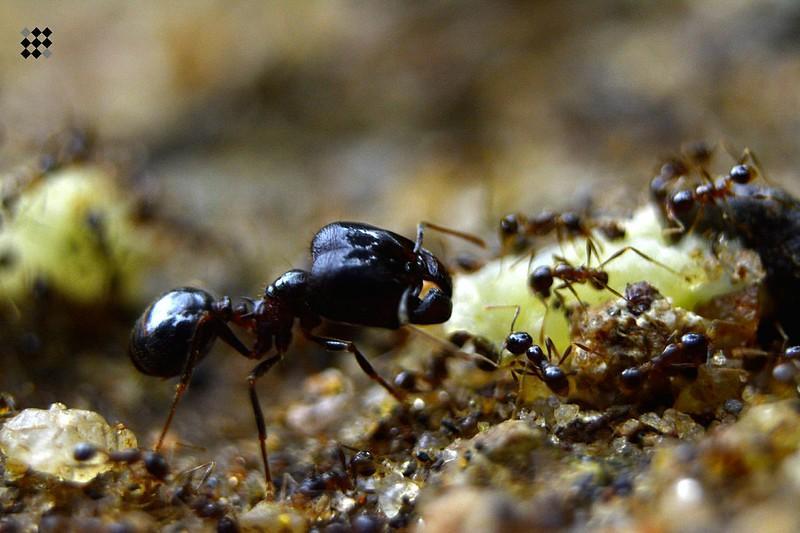
Crunchy and slightly sour, ants fried in butter or vegetable oil are a tasty snack.
It may be challenging to make the transition to an ant-based diet. However, have no fear. Ants do not have a “mothy” flavor and are certainly not “icky.”
Ants have a flavor of their own! Some ants are believed to have a tangy, lemony flavor, while others have a more pronounced peppery aftertaste.
This is due to the fact that ants produce their own acid, which they then employ to ward off potential enemies and protect themselves. Unless you have an allergy, this acid is perfectly safe to consume, just like any other type of citrus fruit.
However, not all ants are citrusy and bitter-sweet.
Different species of edible ants have different flavors. Take, for instance:
- Flying Ants have a flavor similar to that of pork rinds that have been buttered and seasoned. When roasted, they can be eaten as a snack.
- Lemon Ants have, true to their name, a flavor reminiscent of lemon. They are yellow and have a potent odor similar to citronella.
- Leafcutter ants have a flavor similar to bacon. Also, these luscious treats have a robust flavor that needs to be sampled in a restricted quantity first.
- Honeypot Ants have a flavor similar to that of sweet nectar. The aftertaste is reminiscent of strawberries partially dried up in the sun.
In general, the flavor of ants can be described as being similar to that of bacon in terms of its spiciness, bittersweetness, tanginess, and nuttiness. However, with some creative preparation, this slight touch of spiciness can be masked, and the resulting ant meal can be enjoyed by even the most discerning and picky eaters.
Is Eating Ants Good For You?
The traditional applications of ants vary greatly depending on both place and culture. For instance, in some cultures, ants are used to cure asthma and sore throats, and their heads can be used as stitches to repair wounds.
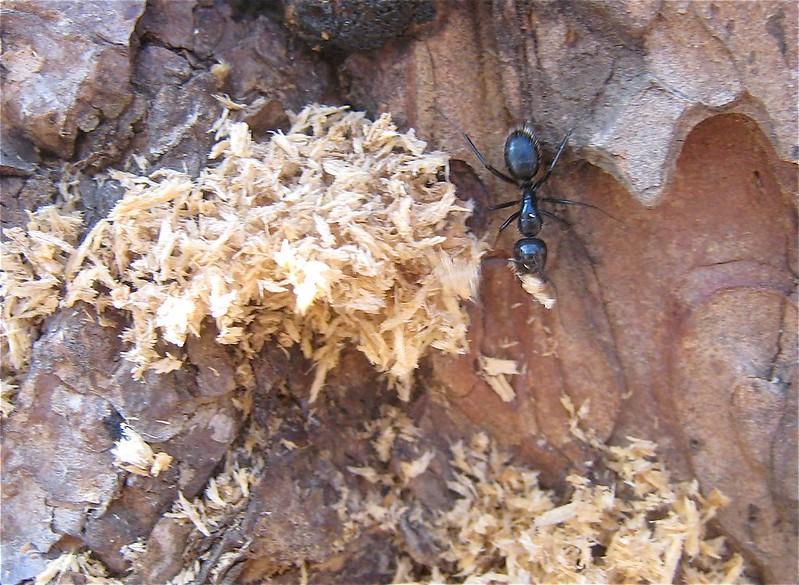
Ants may be a good source of antioxidants, albeit this benefit has received less attention than others.
However, most of the benefits of ants are related to the benefits of eating insects in general, such as offering an environmentally beneficial and alternative source of protein.
Ants Are Rich In Antioxidants
Although less researched than other benefits, ants may be good as a source of antioxidants. According to the findings of one study, the quantities of the antioxidants called polyphenols found in ants are comparable to orange juice. Consuming foods high in antioxidants is essential for reducing oxidative stress-related disorders, including cancer and heart disease.
Ants Are Rich In Protein
Insects’ high protein content makes them a potential replacement for milk, meat, fish, and eggs. In countries that practice entomophagy, insects are a significant source of protein. The global demand for beef has expanded due to rapid population expansion in many parts of the world.
Also, many people believe that the current forms of meat production are not sustainable. Therefore, alternate sources of animal protein, such as ants, could potentially assist in relieving some of the strain placed on the ecosystem.
Eating Ants Is Eco-Friendly
Ant farming for human consumption is credited as having many environmental benefits:
- They’re less likely to transmit illnesses to humans than mammals and birds.
- It is claimed that they bring fewer challenges to the welfare of animals.
- In comparison to cattle, they have a lower requirement for water.
- They also release a low quantity of greenhouse gases and ammonia.
Therefore, ants may become a part of the growing trends that are focused on offering healthier and more environmentally sustainable foods.
Ants Are Rich In Unsaturated Fatty Acids
There are two types of fatty acids: saturated fatty acids and unsaturated fatty acids. The unsaturated fatty acids can be found in a wide variety of seafood, plants, seeds, and insects, including a few different kinds of ant species. On the other hand, unhealthy meals like fast food, packaged food, and desserts tend to be higher in saturated fats.
The South American Leafcutter Ant has a high concentration of unsaturated fatty acids, which are proven to reduce cholesterol levels in the body.
Related: What Are These Orange Bugs On My Milkweed Plants? Harmful Or Beneficial?
How Do You Eat Ants?
Both the larval and adult stages of ants can be consumed by humans. In the case of weaver ants, for instance, the larvae and eggs are preferred over the adults since the adults have a less flavorful taste. Also, ants can be eaten either on their own or as an ingredient in a variety of different cuisines.
Preserving the insects is necessary if they are not consumed right away. To maintain their freshness, store them in the refrigerator or freezer, or dry them in the sun.
They might even last for a few weeks. Additionally, if you are actually collecting your own ants, you may use a Dustbuster or a small shop vac to vacuum them up, and this will ensure that you do not be bitten to hell while you are attempting to collect ants.
After that, you may put the ants in the freezer, and after it thaws out, you can separate the pine needles from the other debris that was in there with them. The final step is to spread them out on the cookie sheet and dry them at a temperature of approximately 225 degrees Fahrenheit. This should be done over very low heat.
Other ways that ants are prepared in various parts of the world include the following:
- In India. Eggs and larvae of weaver ants are cooked by boiling them with various spices, and the adult ants are made into chutney by mixing them with chili and salt.
- In Mexico. Roasting and grinding leaf-cutting ants is a common method used to impart flavor to mayonnaise and create sauces.
- In Colombia. At the local markets, the queens of the leaf-cutting ants are sometimes prepared by frying them or roasting them.
- In the Peruvian Amazon. Roasting or frying weaver ants is a standard preparation method. Roasted larvae are then combined with cassava flour.
- In Thailand. Cans of weaver ants can be purchased at local markets.
- In Laos. It is similar to how citrus is used in Western countries, but weaver ants are added to fish soups to give them a more acidic flavor.
Famous Ant Dishes Around The World
Culture plays a significant role in determining who eats insects. For example, even though most Western nations do not, insects constitute a substantial food source in many different locations of the world.
You can probably understand that many different species of ants exist, and not all of them are often eaten. The following is a list of some of the most well-known ant dishes, along with the countries in which they are consumed:
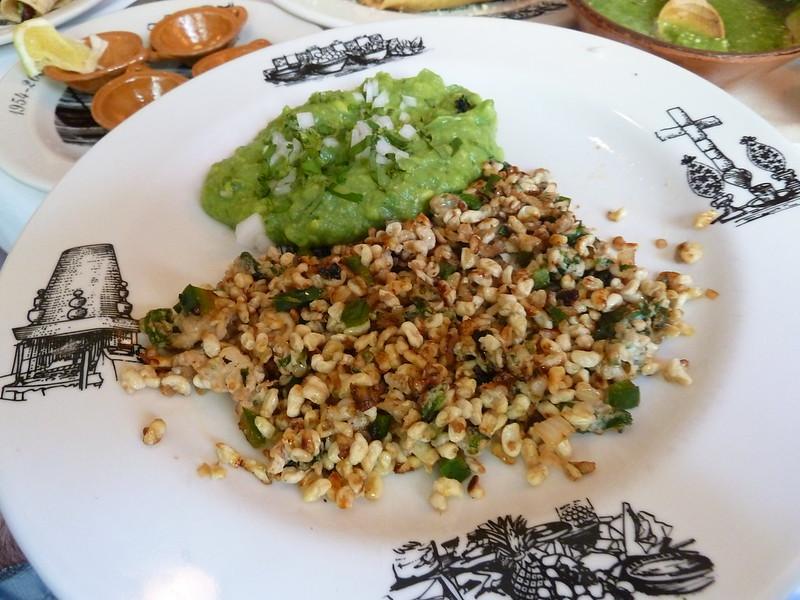
Escamol, or ant pupae and larvae, is considered a highly valued delicacy in Mexico
Escamoles (Mexico)
The Aztecs prized this food, and the exorbitant price it fetches now reflects that sentiment. Although Escamoles are most commonly seen in tacos and omelets, this dish can also be served on its own and is generally served with tortillas and guacamole.
Escamoles is a peculiar Mexican cuisine that is often prepared by frying ant larvae in butter, onions, and chili. It is also known as the caviar of the desert.
Escamoles are served with a variety of sauces. The ants used in it are known as velvety tree ants and as “la hormiga pedorra,” which literally translates to “the farty ant.”
Queen Ant Egg Tostada (Mexico)
René Redzepi, chef and owner of the restaurant Noma in Denmark is not new to preparing food with insects (or, in our situation, not preparing food with ants).
At his pop-up restaurant in London in 2012, the world-famous chef presented creme fraiche that was studded with ants. The chef offers a meal consisting of fourteen courses that exhibit his characteristic unique takes on a regional food in Mexico.
An example is tostada with creamy escamoles (ant eggs) and grilled espolon beans, made with grilled habanero oil and decorated with flower petals and beach greens.
Mod Daeng (Thailand)
Weaver ants are referred to as Mod Daeng in Thailand’s northeastern region. Thai people capture these ants every year during the dry months (February through May). Their eggs are considered to be among the most treasured culinary items there.
Eggs from the Mod Daeng can fetch very high prices in the Thair markets, which gives them an essential role in the economics of the area.
The eggs contain a significant amount of carbohydrates, vitamins, and proteins.
The eggs and the ants can be cooked by frying, boiled in coconut milk, or added to omelets to make a sweet dish known as “tom kati kai mod daeng.”
How To Collect Ants?
You can use your hand to collect them, but I would prefer using a stick as certain species of ants have strong bites. Moreover, ants should be less of a hassle to collect when you put them on a twig and then rattle them into a container.
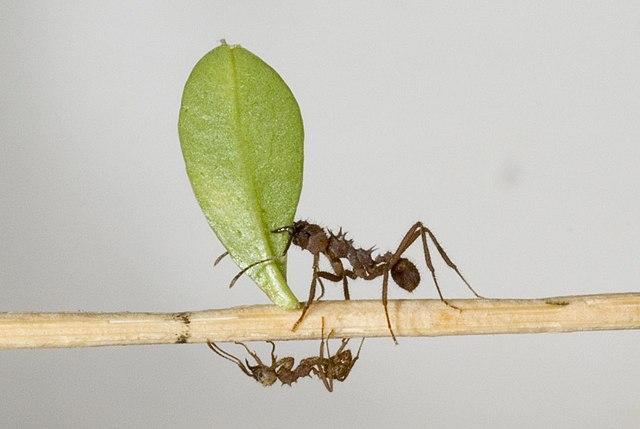
Collecting ants from the net can either be done by hand or with an aspirator.
Finding an ant colony shouldn’t be difficult if you’re not in Antarctica. Keep your gaze fixed on the ground and watch for any movement of ants; then, follow them, particularly if they are carrying something. Whole lines of ants can often be seen marching over the ground, and following them will inevitably lead you to their colony.
The next step, getting them to leave their nest, is just a formality. If you so much as disrupt the colony, ants will immediately begin flooding out of it in large numbers.
Though it’ll take more effort, you might find ant larvae—which look like tiny rice grains if you dig within the colony. Although the quantity of these larvae might differ from species to species and from season to season, it is generally agreed that the larvae are more flavorful and nutritious than the adult ants.
Final Thoughts
Ants are a popular delicacy in many parts of the world, where they are either prepared as part of a meal or eaten on their own. Some recipes even call for ground-up ants as an ingredient (this ant chutney, for example).
Ants are a sustainable alternative to other animal-based protein sources, despite the limited research that has been conducted on their potential advantages and disadvantages. However, be sure to steer clear of swallowing any dangerous varieties, such as jack-jumper and fire ants.
Frequently Asked Questions (FAQs)
Is eating ants good for you?
Ants may be healthy to consume since they are a source of antioxidants and may contribute to heart health. However, the benefits of eating ants have not been investigated as thoroughly as the benefits of eating other foods. Additionally, ants are a great way to get your daily dose of protein, and they also provide a lot of healthy unsaturated fatty acids that can help keep your cholesterol levels in check.
What will happen if you accidentally eat ants?
There is no need to fear if you accidentally eat an insect such as an ant. In most cases, your digestive tract can process arthropods. However, there is a very low danger of infection if you eat entire edible ants that have been infected with a certain parasite. In particular, stay away from fire ants and jack-jumper ants, both of which are poisonous.
Is it OK to eat black ants?
Even while black ants, like most ant species, are harmless to humans when eaten, it’s recommended to kill them first to avoid getting bitten. There is also a growing trend in many parts of Asia and South America to prepare meals centered around ants because of their high nutrient content. Nonetheless, avoid eating ants if they are infected or dirty.
Are all ants edible?
While it’s true that there are some species of ants that aren’t fit for human consumption, the vast majority of the ants you’d find on an average day in the woods or around the house would likely be fine to eat. Furthermore, because certain ants have a very powerful bite, it is usually preferable to kill your ants before eating them.
Why do ants taste spicy?
Ants have a spicy flavor due to the presence of formic acid, which is used by ants as a defense mechanism against other animals that could try to eat them. In most cases, eating formic acid would not hurt you, especially in such minute quantities. However, there are some people who are allergic to it, and if you are one of them, don’t eat ants!
Sources For Further Reading
Eating insects — safely. (2021). Michigan State University Extension. Retrieved 24 September 2022, from https://www.canr.msu.edu/news/eating-insects-safely
We asked hundreds of Aussies whether they’d eat insects, and most said yes – so what’s holding people back? (2022). Retrieved 24 September 2022, from https://www.rmit.edu.au/news/all-news/2022/jan/eating-insects
Eating Insects Might Seem Yucky, But They Are Nutritious. (2022). Retrieved 24 September 2022, from https://www.rutgers.edu/news/eating-insects-might-seem-yucky-they-are-nutritious
The next trend in food: Edible insects. (2020). Retrieved 24 September 2022, from https://www.universityofcalifornia.edu/news/next-trend-food-edible-insects
Editor’s Recommendations
How To Get Rid Of Tiny White Bugs On Eggplants For Good?
Aphids Vs. Thrips | Which Is Worse And How You Can Get Rid Of Them?
What Are These Orange Bugs On My Milkweed Plants? Harmful Or Beneficial?







